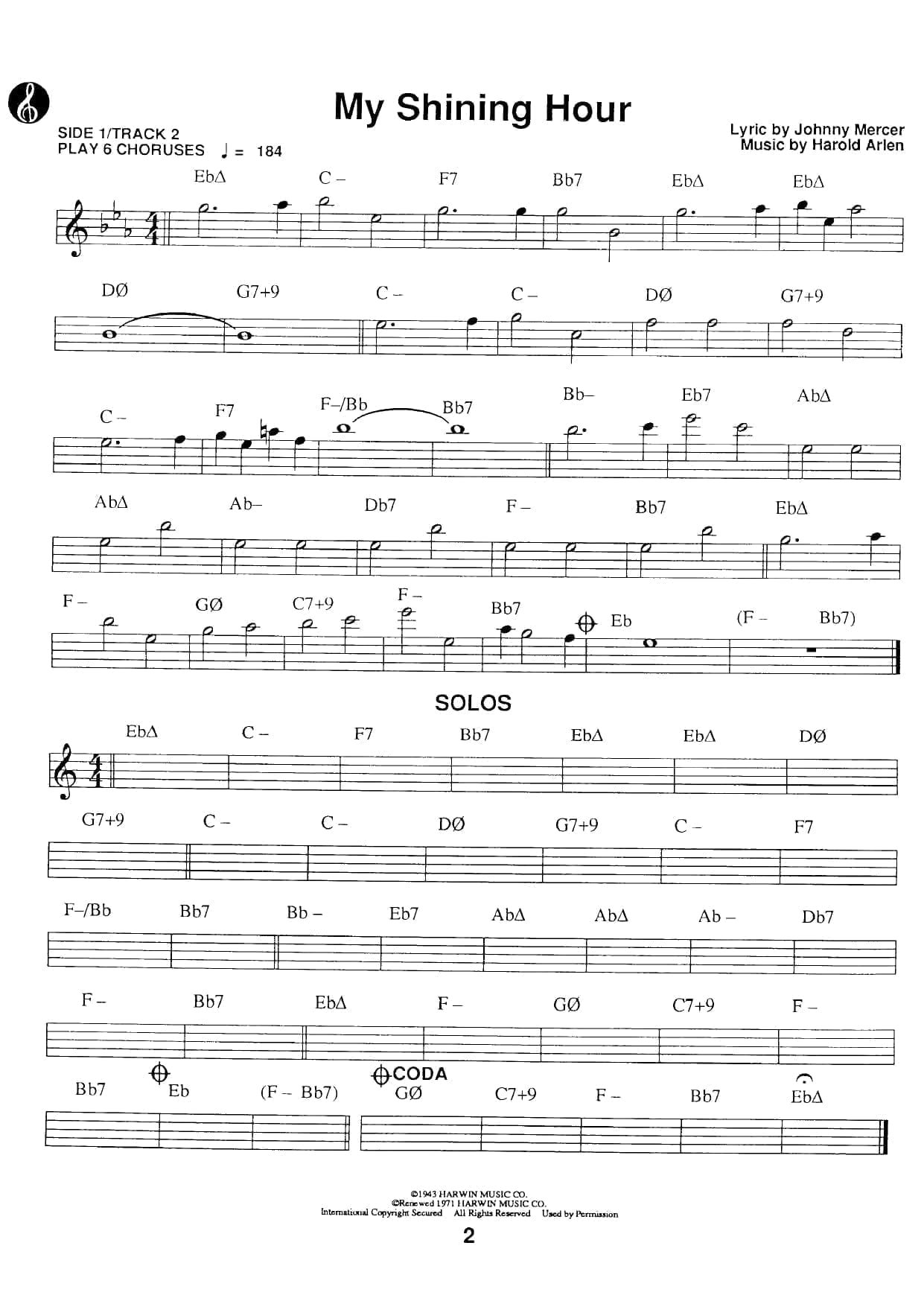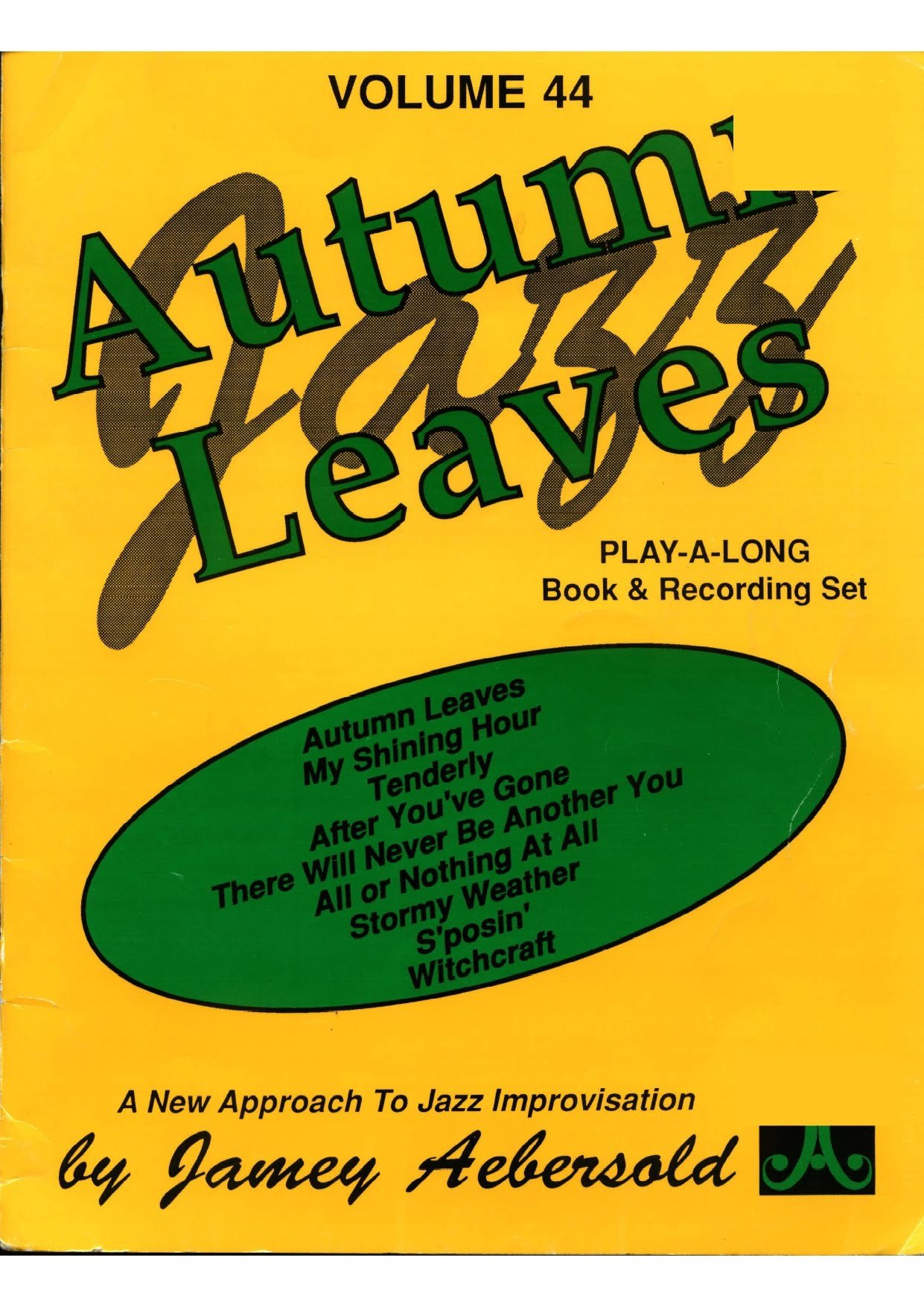Jazz Play Along – My Shining Hour (with sheet music) by Harold Arlen & Johnny Mercer
Best Sheet Music download from our Library.
Jazz Play Along – My Shining Hour (with sheet music available in our online sheet music Library, included in Aebersold’s Vol. 44 Autumn Leaves) by Harold Arlen & Johnny MercerPlay Jazz Standards!
“My Shining Hour” is a song composed by Harold Arlen with lyrics by Johnny Mercer for the film The Sky’s the Limit (1943). In the film, the song is sung by Sally Sweetland, who dubbed it for actress Joan Leslie. The orchestra was led by Freddie Slack.
Please, subscribe to our Library. Thank you!
“My Shining Hour” was nominated for an Academy Award for Best Song but lost to “You’ll Never Know”. The film was released on July 13, 1943. The song became a hit by Glen Gray with Eugenie Baird as vocalist, reaching No. 4 in the Billboard charts.
The song’s title may have been a reference to Winston Churchill’s speech to British citizens during World War II: “if the British Empire and its Commonwealth last for a thousand years, men will still say: this was their finest hour.”
In the 1944 film Youth Runs Wild an instrumental version of the song plays during a scene with Kent Smith and Glen Vernon.
The song was also used in the film Radio Stars on Parade (1945) when it was sung by Frances Langford accompanied by the Skinnay Ennis orchestra.
Harold Arlen remained extremely busy in the years after The Wizard of Oz, not to mention extremely successful! Four months after the release of The Wizard of Oz in August 1939, M-G-M also released another film with a score written by Harold Arlen and E.Y. Harburg called At the Circus.
From the movie, which starred the Marx Brothers, came the comical song entitled Lydia the Tattooed Lady. Then, in 1940, Harold wrote the score for the American Negro Suite with Ted Koehler. The songs from the show have been heralded as major contributions to American folk music.
While he was collaborating with Koehler on the American Negro Suite, Arlen was commissioned to write an instrumental work. At the time, Anya had been studying ballet and so, with his wife in mind, Harold chose to write a piece in the form of a minuet.
Titled American Minuet, this work of considerable grace and charm is not very well-known. Though it added to his already sizable professional reputation by demonstrating yet another of his many writing styles, it was not the kind of work that paid the rent.
So, early in 1941, Harold returned to Warner Brothers and was assigned to work with Johnny Mercer on a film script called Hot Nocturne. Of particular importance was a scene where the hero is tossed into jail with his friends, and a black man in a nearby cell is singing the blues. Harold was determined to come up with something musically strong and worthy of a fine voice, so he locked himself in his study and analyzed recordings of the blues.
After two days at it, Harold emerged with a melody. Mercer, upon hearing it, began inventing lyrical ideas that quickly covered four pages. Harold admired the lyricist’s work and suggested only one change – that a line appearing on the fourth page be placed at the beginning of the song. The line was “My mamma done tol’ me…” and the song was, of course, Blues in the Night. It proved impressive enough to give a new title to the film, too; Hot Nocturne became Blues in the Night. The title song, just like Get Happy, Stormy Weather, and Over the Rainbow, became an overnight hit!
On completing the Warner Brothers assignment, Arlen and Mercer moved to Paramount. The movie industry, by early 1942, was geared for war. Service films were ground out regularly, as were all-star musicals. Paramount’s biggest all-star musical was Star Spangled Rhythm, for which Arlen and Mercer wrote That Old Black Magic, and Hit the Road to Dreamland.
Their next job was a less impressive one for RKO in 1943. The story was simply about a Flying Tiger pilot on leave, who was charmingly portrayed by Fred Astaire. The film, titled The Sky’s the Limit, was not the success the studio hoped it would be. However, two of the songs became tremendous hits.
Fred Astaire recalled that “several months [after the film], My Shining Hour became the number-one song of its day and One for My Baby (And One More for the Road) has become a standard classic popular song and one of the best pieces of material that was ever written especially for me.” The One for My Baby sequence, staged and choreographed by Astaire, was one of the year’s film highlights.


